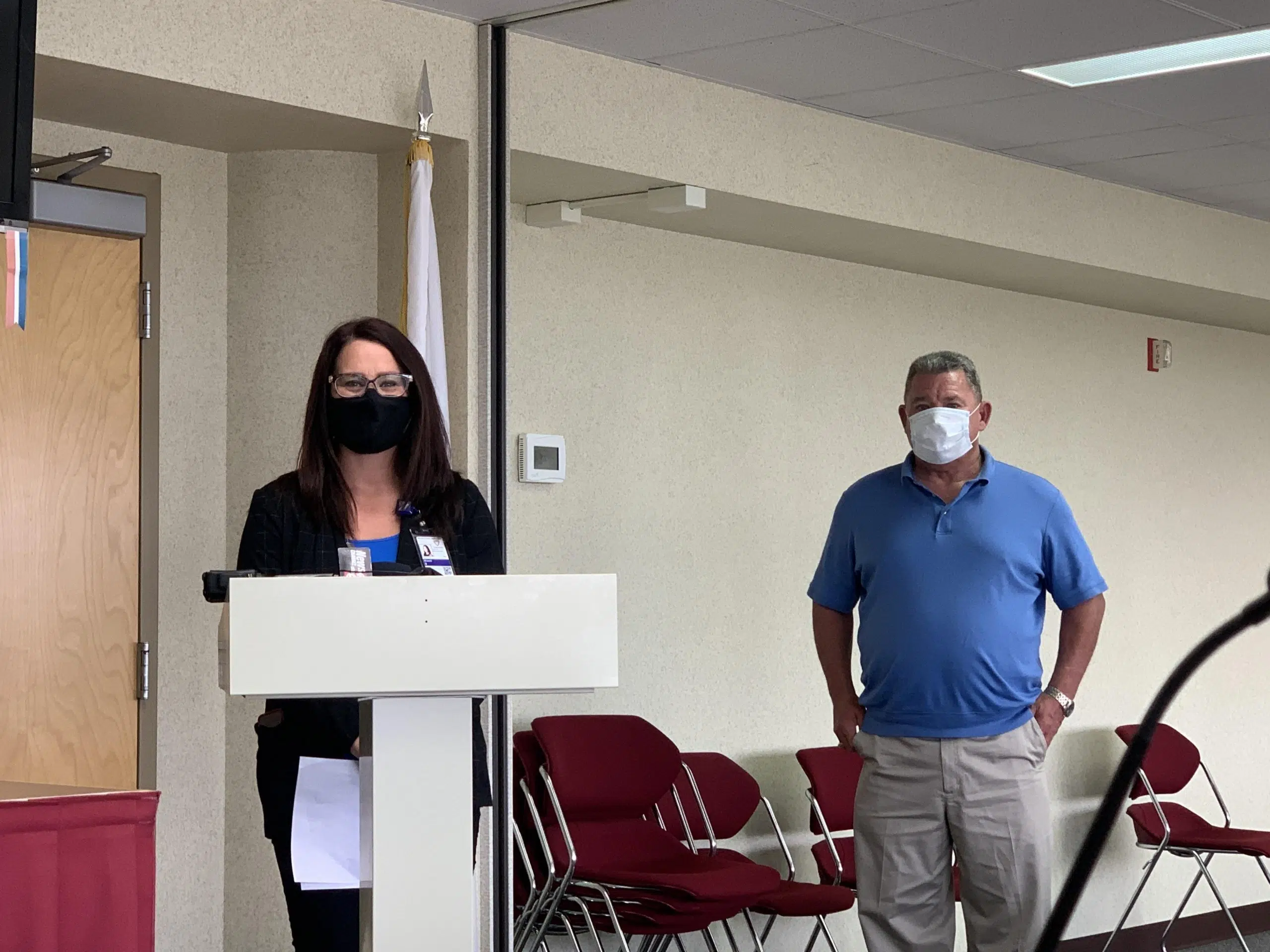September 25, 2020 –
September 25, 2020 – The Macon County Health Department has announced that The Illinois Department of Public Health has moved Macon County into one of 17 counties at warning level for novel coronavirus disease (COVID-19).
According to the IDPH, a county enters a warning level when two or more COVID-19 risk indicators that measure the amount of COVID-19 increase.
Macon County Public Health Administrator, Brandi Binkley, stated that the movement to warning level was caused after there were more than 50 new cases per 100,000 people. In addition, the weekly number of deaths increased by more than 20% for 2 consecutive weeks.
Binkley stressed that moving into this warning level does not come with new restrictions, but urged residents to be more vigilant to reduce the number of positive cases. Possible restrictions, such as not allowing indoor dining, is decided by the state and on a regional basis. Macon County is located in Region 6.
However, IDPH recently decided that Champaign County’s metrics would not be included in the Region 6 metrics for the purpose of monitoring movement to warning levels. Champaign County, specifically the University of Illinois, is testing at a higher rate. IDPH felt that the positivity rate in Region 6 might not be accurately reflected by including Champaign County numbers. The result of removing those metrics may cause Region 6 to be closer to reporting 8% positivity rate for 3 consecutive days. That benchmark would lead the State to institute new mitigation measures for Region 6.
Binkley says the Macon County Health Department, along with the Joint Crisis Communication Team, has increased efforts to try to avoid that fate, including increasing testing capacity, increased contact tracing, public education, increased communication with congregant settings, and investigating businesses and facilities with complaints of non-compliance.
Binkley added the increase is due, in part, to large gatherings and events that have occurred in the community. Those including weddings, funerals, parties within families and groups and friends, crowded bars, schools, congregant living settings and people continuing to go to work when they are symptomatic. Community cases and community transmission has also increased as well.
“Our community thankfully has worked together collaboratively. We need the entire community to come together and see that we are in a pandemic. We need everyone to take ownership and do what you can.”
Brinkley said there are a number of things that community members can do to help stem the spread, including:
-Properly using PPE and masks. Binkley added that masks are not a substitute for proper social distancing.
-Stay home if you are symptomatic, have tested positive, or have been in contact with someone who has tested positive.
-Follow health guidelines and use proper hygiene.
-Participate in contact tracing. Binkley said that due to increased contact tracing, the number may come up as “spam” on your phone. Binkley encourages residents to add 423-6988 to their phones so that they are aware if the Health Department is calling.
“Help us move these numbers back in the right direction”, Binkley added.
Seventeen counties are currently reported at a warning level – Bond, Boone, Cass, Christian, Clinton, Crawford, DeWitt, Fayette, Grundy, Hamilton, Macon, Menard, Peoria, Putnam, Washington, Wayne, and Winnebago.
COVID-19 County Metrics
• Number of deaths. This metric indicates a warning when the weekly number of deaths increases more than 20% for two consecutive weeks.
• Weekly test positivity. This metric indicates a warning when the 7-day test positivity rate rises above 8%.
• ICU availability. If there are fewer than 20% of intensive care units available in the region, this triggers a warning.
• Weekly emergency department visits. This metric indicates a warning when the weekly percent of COVID-19-like-illness emergency department visits increase by more than 20% for two consecutive weeks.
• Weekly hospital admissions. A warning is triggered when the weekly number of hospital admissions for COVID-19-like-illness increases by more than 20% for two consecutive weeks.
• Tests performed. This metric is used to provide context and indicate if more testing is needed in the county.
• Clusters. This metric looks at the percent of COVID-19 cases associated with clusters or outbreaks and is used to understand large increase in cases.
These metrics are intended to be used for local level awareness to help local leaders, businesses, local health departments, and the public make informed decisions about personal and family gatherings, as well as what activities they choose to do. The metrics are updated weekly, from the Sunday-Saturday of the prior week.

